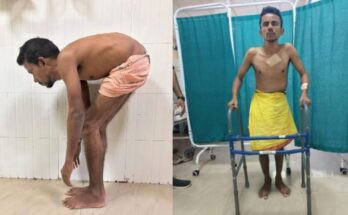New Delhi: Yoga is an ancient Indian practice and has evolved over thousands of years. It deals with the physical, mental, moral, and spiritual well-being of an individual. It has been observed that, when practiced daily, yoga and meditation significantly helps in reducing stress, anxiety, depression, sleep disturbances, loss of appetite and fatigue in some cancer patients and in addition to enhancing quality of life, immune status and will to fight among patients as well, say experts.
Yoga helps patients with cancer to cope up with symptoms and side effects induced due to treatment they are receiving. Relaxation can be attained through yoga by using different breathing exercises, different body postures, and relaxation techniques. Pranayam helps in regulating breathing patterns, asana improves strength and flexibility. Deep relaxation is earned with regular meditation practices. These yoga interventions help by increasing perceived control, decreasing the potential stigma associated with cancer and having a “psychiatric problem,” and provide a supportive environment where patients can fight with their fears and concerns.
Stress management techniques that have been proven helpful include progressive muscle relaxation, diaphragmatic breathing, guided imagery, and social support. Yoga is especially attractive as it combines many of these techniques with simple stretching exercises, breathing, and relaxation techniques that could be useful for patients with cancer.
Yoga may be calming for post treatment effects.
Patients with cancer have revealed that yoga helped them in calming their mind to cope better with their cancer and its treatment. Few other revealed, it helped in reducing symptoms and side effects such as pain, tiredness, sleep problems and depression. Yoga can sometimes help you to move around more quickly and easily after surgery for cancer, says Dr Harsha Agarwal, Head Psycho Oncology, Rajiv Gandhi Cancer Institute & Research Centre (RGCIRC).
The effects of yoga intervention have been moderate to large in various settings. Cooling effects of Pranayama such as Sheetali, Sheetakari, and Sadanta have been useful in managing chemotherapy-induced nausea and vomiting (CINV) along with Pavanamuktasana (supine knee-chest) and Uttana padasana (straight leg raise).
Loosening exercises, gentle stretches, Yoga Asanas (stretching postures), Sudarshan Kriya, and relaxation techniques have been shown to be effective in managing fatigue, pain, and sleep problems. Techniques that use postures in variable intervals with relaxation techniques (cyclic meditation/movement meditation) have been found to be useful in reducing stress and improving sleep. Mind sound resonance technique that involves chanting and meditating on sound “a,” “u,” and “m,” and mantras have been shown to reduce fear, anxiety, and instill restful state of mind.
It is advisable to perform yoga under the supervision of a qualified practitioner trained by a professional.
Safety measures to be adhered to while practising the yoga poses are as follows:
Allow at least 2 hours after eating before doing yoga.
Don’t do yoga alone at home until you’ve practised it with a qualified teacher.
Tell your teacher about any medical problems you have, including back and joint problems, before you begin.
Stop and tell your teacher if any posture is painful for you.
Never try difficult postures, such as head and shoulder stands, without first being shown how to do this by a qualified teacher.
Women who are pregnant, or have their period, shouldn’t practice certain postures (your teacher will advise you about which these are).
Drink plenty of water after every class.




